Is IB Chemistry Harder Than A-Level Chemistry?
Key Points:
- Comparing the new 2023 IB chemistry syllabus with current A-Level chemistry syllabuses, A-Level chemistry is harder than the Standard Level syllabus, and slightly harder than the Higher Level syllabus.
- A-Level chemistry has harder exams.
- IB chemistry is overall harder due to its coursework requirements, which significantly increases the workload for students.
- If chemistry is a prerequisite for your degree, there isn’t an easy option though – both programmes have their challenges.
- The new 2023 IB chemistry syllabus has abolished traditional topics (Atomic Structure, Bonding, Acids & Bases etc.) in favour of Structure/Reactivity topics. This may increase the challenge for students. However, I think chemistry teachers will teach the old topics, helping students build the important links.
Contents
- Revisiting the IB vs A-Level Chemistry Debate: A 2023 Update
- In Depth Comparison of The Two Syllabuses
- Difficulty Of IB Chemistry Topics Versus A-Level Chemistry Equivalents
- Which Course Has Harder Exam Questions?
- Which Course Has the More Demanding Workload?
- Conclusion: IB Chemistry Is Still Harder Than A-Level Chemistry
- Which Is Better, A-Level Chemistry or IB Chemistry?
- 9 Comments
Revisiting the IB vs A-Level Chemistry Debate: A 2023 Update
Chemistry is a popular and essential science for many competitive degrees, so it’s no surprise to find many online ‘IB chemistry versus A Level chemistry’ discussions debating which programme is the easier route into university.
In the previous version of this guide, I compared the old 2014 IB chemistry syllabus with the A-Level chemistry syllabuses from AQA, CAIE, Edexcel , OCR A, and OCR B (Salter’s). My conclusion then was that IB chemistry was more difficult due to its slightly more challenging exams, and its demanding coursework.
Why am I updating this guide? Mainly because the new 2023 IB chemistry syllabus has undergone a LOT of changes:
- The amount of content has been reduced for both SL and HL
- The number of exam papers has been reduced from three to two
- Calculators are now allowed in all IB chemistry papers
- All mathematical equations are provided for IB chemistry
- The options (Materials, Biochemistry, Energy, and Medicinal Chemistry) have been removed completely. A small amount of content from the options has been retained and added to the core IB chemistry syllabus.
- Traditional chemistry topics (Atomic structure, Rates of reaction, Equilibrium etc.) have been scrapped and the syllabus has been organised into Structure and Reactivity modules. The aim is to try to teach chemistry in a more integrated way, and break down the traditional barriers between organic, physical, and inorganic chemistry.
In Depth Comparison of The Two Syllabuses
OK, let’s be honest and admit that IB chemistry versus A-Level chemistry isn’t really a fair fight.
There are two IB chemistry syllabuses (HL and SL) and six major A-Level chemistry syllabuses (AQA, CAIE, Edexcel A-Level and International A-Level, OCR A, and WJEC) to compare. We need to at least try and do a like-for-like comparison.
My comparison is therefore going to be based on:
- The content of the IB HL syllabus and all the A-Level syllabuses
- The difficulty of exams
- The workload
As much as possible, I will highlight the major differences between the IB HL syllabus and A-Level chemistry syllabuses, and exams from 2016 – 2023.
Let’s start by comparing the content:
Structure 1.1 – Introduction to the particulate nature of matter
What is covered by the IB?
- The distinction between elements, compounds and mixtures.
- The distinction between heterogeneous and homogenous mixtures
- Separation techniques ( filtration, recrystallization, evaporation, distillation and paper chromatography).
- The kinetic model and changes of state, melting, freezing, vaporization (evaporation and boiling), condensation, sublimation and deposition.
Comparison to A-Level chemistry
- The domestic A-Level boards (AQA, Edexcel, OCR and WJEC) skip a lot of these basic definitions and foundational concepts as they are covered at GCSE/IGCSE level
- Edexcel IAL and CAIE do however cover these basics
- Separating techniques are an integral part of A-Level chemistry and students need a deeper understanding of them
Structure 1.2—The nuclear atom
What is covered by the IB?
- Atomic structure, isotopes, and use of mass spectrometry to calculate relative atomic mass
Comparison to A-Level chemistry
- Mostly the same content as IB HL
- A significant difference is that some A-Level boards (AQA, CAIE, Edexcel) require prediction of mass spectra based on isotopic abundances – these can be tricky exam questions
Structure 1.3—Electron configurations
What is covered by the IB?
- The relationship between colour, energy, frequency and wavelength for electromagnetic radiation
- Line and emission spectra, and the significance of line spectra to the development of quantum theory
- The hydrogen emission spectrum
- Energy levels (shells), sub-levels, and orbitals
- Electron configuration
- First ionisation energies and successive ionisation energies as evidence for electronic structure
- Calculation of ionisation energies using E = hf
Comparison to A-Level chemistry
- Most of the essential concepts and skills are also covered at A-Level
- A-Level has much less content related to emission spectra – for example, no A-Level syllabus requires knowledge of the hydrogen emission spectrum
- Use of E = hf in calculations is restricted to AQA
- Exam questions are similar in terms of style and difficulty, but the IB’s broader coverage leads to slightly higher demand
Structure 1.4—Counting particles by mass: The mole
What is covered by the IB?
- The mole and Avogadro constant
- RAM and RFM
- Empirical formula
- Concentrations and solutions
Comparison to A-Level chemistry
- No significant difference in terms of content
- The unstructured and lengthy, multistep calculations (particularly common to AQA, Edexcel, and OCR) makes A-Level harder overall
Structure 1.5—Ideal gases
What is covered by the IB?
- The relationships between pressure, temperature, volume, and amount of substance for gases (meaning all the gas laws)
- Real and ideal gases
- Limitations of the ideal gas model
- The ideal gas equation and combined gas law
Comparison to A-Level chemistry
- IB coverage is more in depth
- Only CAIE covers the ideal gas model and its limitations
- The individual gas laws and combined gas law are not required for A-Level (though can of course be obtained and used from pV = nRT)
Structure 2.1—The ionic model
What is covered by the IB?
- Formation of ions
- Deducing the name and formula of ionic compounds
- Ionic structures
- Volatility, electrical conductivity, and solubility of ionic compounds
- Lattice enthalpy as a measure of ionic bond strength
Comparison to A-Level chemistry
- No significant difference in content or questions
Structure 2.2—The covalent model
What is covered by the IB?
- Covalent bonding
- Giant covalent structures (Si, SiO2, diamond, graphite, fullerenes, graphene)
- The octet rule
- Single, double, and triple bonds
- Coordinate bonds
- Lewis formula of covalent molecules with up to 6 electron pairs
- Formal charge
- VSEPR for molecules with up to 6 electron pairs
- Electronegativity and bond polarity
- Intermolecular forces and molecular polarity
- Volatility, electrical conductivity, and solubility of covalent substances
- Chromatography and Rf values
- Resonance and delocalisation in molecules and ions
- Sigma and pi bonds and their formation
- Hybridisation (limited to sp3, sp2, and sp)
Comparison to A-Level chemistry
- IB chemistry has always covered covalent bonding in greater depth and breadth and the 2023 syllabus continues this trend
- A-Level has much lighter coverage and doesn’t equip students with as many vital skills as IB – such as the ability to draw Lewis formula for any molecule or ion
- The A-Level syllabuses differ greatly in their coverage of VSEPR
- Chromatography and Rf values are covered by A-Level, but not as part of covalent bonding
Structure 2.3—The metallic model
What is covered by the IB?
- Metallic bonding
- The strength of metallic bonds
- Electrical conductivity, thermal conductivity and malleability of metals
- Melting points of s, p and d-block metals
Comparison to A-Level chemistry
- No significant difference in content or questions
Structure 2.4—From models to materials
What is covered by the IB?
- A new topic made up of parts from the discarded Materials option
- The bonding triangle and the continuum between ionic, covalent and metallic bonding models
- Alloys and their properties
- Addition polymers and their properties
- Condensation polymers and their properties
Comparison to A-Level chemistry
- The bonding triangle is not covered at A-Level, nor are alloys
- Addition and condensation polymers are covered in greater depth by A-Level, and questions are significantly more difficult (based on Materials questions from IB Paper 3, and the 2023 specimen papers)
Structure 3.1—The periodic table: Classification of elements
What is covered by the IB?
- The periodic table (s, p, d, and f blocks) and location of metals, non-metals, and metalloids
- Period number and electron configuration
- Periodicity and periodic trends for atomic radius, ionic radius, ionization energy, electron affinity and electronegativity
- Trend in metallic and non-metallic properties
- The acid-base properties of the oxides of group 1, group 2, carbon and sulfur, and equations for these oxides with water
- Acid rain caused by acidic oxides, and ocean acidification due to rising CO2 levels
- Oxidation state
- Discontinuities in first ionisation energy as evidence for energy levels
- Transition elements and their properties (variable oxidation state, high melting points, magnetic properties, catalytic properties, formation of coloured compounds and formation of complex ions with ligands.)
- The oxidation state of first-row transition metal ions
- Use the colour wheel to deduce the wavelengths and frequencies of light absorbed by transition metal ions
Comparison to A-Level chemistry
- The periodic table and periodic trends parts are the same as for A-Level, though the trend in metallic and non-metallic properties is not explicitly covered at A-Level
- All the A-Level boards except OCR and WJEC have content on non-metal oxides and pollution
- The IB is unique in covering ocean acidification
- A-Level has far more inorganic chemistry to learn, such as:
- Properties and reactions of Group 1 and 2 metals
- Properties and reactions of halogens and halide ions
- More content on the reactions of period 3 compounds (oxides and chlorides)
- Far more content for transition metals
Structure 3.2—Functional groups: Classification of organic compounds
What is covered by the IB?
- Empirical, molecular, structural (full and condensed), stereochemical and skeletal formulae of organic compounds
- The functional groups: halogeno, hydroxyl, carbonyl, carboxyl, alkoxy, amino, amido, ester, phenyl
- Saturated and unsaturated compounds
- Homologous series
- Alkanes, alkenes, alkynes, halogenoalkanes, alcohols, aldehydes, ketones, carboxylic acids, ethers, amines, amides and esters
- Name saturated or mono-unsaturated halogenoalkanes, alcohols, aldehydes, ketones, and carboxylic acids with up to 6 carbons in the parent chain (note: molecules will contain only one functional group)
- Branched, straight-chain, position and functional group isomers.
- Cis-trans isomers in non-cyclic alkenes and C3 and C4 cycloalkanes
- Optical isomerism
- Mass spectrometry and fragmentation in organic analysis
- IR spectroscopy in organic analysis
- Hi-res 1H NMR in organic analysis
Comparison to A-Level chemistry
- The introduction to organic chemistry parts overlap with A-Level
- Apart from WJEC (which only requires alkenes, halogenoalkanes, alcohols, and carboxylic acids), A-Level students need to name more complex molecules that contain more than one functional groups
- Nitriles, acyl chlorides, and acid anhydrides are missing from the IB syllabus
- Isomerism in cycloalkanes is only covered by CAIE at A-Level
- All A-Level boards cover MS fragmentation except AQA and WJEC
- A-Level chemistry includes 13C NMR
- Organic analysis questions are harder for A-Level and frequently discriminate between top grades
Reactivity 1.1—Measuring enthalpy changes
What is covered by the IB?
- Endothermic and exothermic reactions
- Stability and enthalpy changes
- Standard enthalpy changes
- Q = mcΔT and ΔH = − Q/n
- Energy profile diagrams
Comparison to A-Level chemistry
- No significant difference in content or questions
Reactivity 1.2—Energy cycles in reactions
What is covered by the IB?
- Bond enthalpy and use in calculations
- Hess’s Law
- Standard enthalpy of formation and combustion and use in energy cycles
- Born-Haber cycles for calculation of lattice enthalpy
Comparison to A-Level chemistry
- Construction of Born-Haber cycles is required for A-Level
- Enthalpy of solution (and related energy cycle) is required for A-Level
- Trends in lattice enthalpy and hydration enthalpy are required for A-Level
- Theoretical vs. experimental lattice enthalpy required for some A-Level boards
Reactivity 1.3—Energy from fuels
What is covered by the IB?
- Combustion reactions of reactive metals, non-metals, hydrocarbons and alcohols
- Incomplete combustion of hydrocarbons and alcohols
- Evaluate CO2 emissions for different fuels
- Relate CO2 levels and the greenhouse effect
- Biofuels, including pros and cons
- Fuel cells and their redox chemistry
Comparison to A-Level chemistry
- Content on CO2 emissions and environmental impact is unique to IB
- All A-Level boards cover biofuels except CAIE and OCR
- All boards apart from CAIE cover fuel cells in slightly more depth than IB
Reactivity 1.4—Entropy and spontaneity
What is covered by the IB?
- Entropy, standard molar entropy, and entropy changes
- ΔG = ΔH – TΔS
- Spontaneous change
- ΔG and equilibrium
- ΔG and reaction quotient
Comparison to A-Level chemistry
- Entropy and Gibbs energy are covered in greater depth and with more mathematical emphasis in the IB
Reactivity 2.1—How much? The amount of chemical change
What is covered by the IB?
- Deducing chemical equations
- Calculating reacting masses
- Calculate volumes and concentrations
- Limiting reactants
- Percentage yield
- Atom economy
Comparison to A-Level chemistry
- The content is largely the same
- Here though is another example of where the lengthier, unstructured A-Level calculations (particularly relating to titrations, determination of waters of crystallisation, combustion analysis, and precipitation analysis) make A-Level chemistry more difficult
Reactivity 2.2—How fast? The rate of chemical change
What is covered by the IB?
- Rates of reaction
- Collision theory
- Maxwell–Boltzmann distribution
- Biological catalysts (enzymes)
- Reaction mechanisms and rds
- Representing intermediates and transition states on energy profiles
- Molecularity of elementary steps
- Rate equations
- Experimental determination of rate equations
- Orders of reaction (zero, first, and second)
- The rate constant and its units
- The Arrhenius equation
Comparison to A-Level chemistry
- No significant difference in content or questions
Reactivity 2.3—How far? The extent of chemical change
What is covered by the IB?
- Dynamic equilibrium
- The equilibrium constant
- The equilibrium law
- Equilibrium constants and extent of reaction
- Le Chatelier’s principle
- The reaction quotient, Q, and the direction to equilibrium
- ΔG = −RT ln K (relating Gibbs energy change and equilibrium)
Comparison to A-Level chemistry
- Kp, covered by all A-Level boards, is not covered by the IB
- ΔG = −RT ln K only appears on the syllabus for Edexcel
- There is little difference in exam question difficulty
Reactivity 3.1—Proton transfer reactions
What is covered by the IB?
- Bronsted-Lowry acids and bases
- Conjugate acid-base pairs
- Amphiprotic species
- pH and the pH scale
- Kw, the ionic product of water
- Strong and weak acids and bases
- Reactions of acids with metal oxides, metal hydroxides, hydrogencarbonates and carbonates
- pH curves for strong/weak acid and base neutralisations
- The pOH scale
- Ka, pKa, Kb, and pKb
- Ka x Kb = Kw
- Salt hydrolysis and pH of salt solutions
- Indicators as weak acids with an endpoint pH corresponding to its pKa
- Equations to explain effect of pH on indicator colour
- Acidic and basic buffers
- Calculations related to buffer composition
Comparison to A-Level chemistry
- This demanding, mathematical topic is more demanding in IB chemistry, with more content, more depth, and more calculations
Reactivity 3.2—Electron transfer reactions
What is covered by the IB?
- Oxidation and reduction
- Oxidising and reducing agents
- Redox equations and half-equations in neutral and acidic conditions
- Predict the relative ease of oxidation of metals.
- Predict the relative ease of reduction of halogens.
- Interpret data regarding metal and metal ion reactions
- Reactions of reactive metals and hydrogen
- Primary (voltaic) cells: their components and redox chemistry
- Secondary cells
- The pros and cons of fuel cells, primary cells, and secondary cells
- Oxidation of primary and secondary alcohols
- Reduction of carboxylic acids, aldehydes and ketones
- Hydrogenation of alkenes and alkynes
- Electrolysis and electrolytic cells
- Electrolysis of molten salts and aqueous solutions
- The standard hydrogen electrode
- Standard electrode potentials and ease of oxidation/reduction
- Standard cell potentials and spontaneity
- The relationship between standard change in Gibbs energy and standard cell potential for a reaction
- Electroplating
Comparison to A-Level chemistry
- Electrolysis is only covered by CAIE
- The organic component of this topic is comparable, though alkyne reduction is not covered at A-Level
- Mechanisms of hydride reduction is required at A-Level
- IB electrochemistry has more content and slightly greater depth, so is harder than A-Level – though CAIE is close
Reactivity 3.3—Electron sharing reactions
What is covered by the IB?
- Radicals
- Homolytic fission
- Radical substitution reactions and their mechanism
Comparison to A-Level chemistry
- No significant difference in content or questions
Reactivity 3.4—Electron-pair sharing reactions
What is covered by the IB?
- Heterolytic fission
- Nucleophiles and electrophiles
- Nucleophilic substitution
- SN1 and SN2 mechanisms and relationship to halogenoalkane structure
- Relative rates of nucleophilic substitution of halogenoalkanes
- Electrophilic substitution of alkenes with water, halogens, and hydrogen halides (including mechanism)
- Electrophilic substitution involving asymmetric alkenes
- The stability of carbocations
- Lewis acids and bases
- Lewis acid-base coordination complexes
- Transition metal coordination complexes
Comparison to A-Level chemistry
- A-Level chemistry has vastly more organic content, including:
- Acylation reactions (esterification and amidation) involving alcohols, carboxylic acids, acyl chlorides, acid anhydrides, amines, and extension to polyesters and polyamides
- Carbonyl chemistry (reactions of aldehydes and ketones)
- Amine chemistry (including basic and nucleophilic behaviour)
- Reduction of carbonyl compounds by hydride reducing agents
- Elimination reactions
- Mechanism of nucleophilic addition
- Mechanism of nucleophilic addition-elimination
- Acylation, halogenation, and alkylation of arenes by electrophilic substitution
- Organic synthesis
Difficulty Of IB Chemistry Topics Versus A-Level Chemistry Equivalents
Overall, the A-Level chemistry syllabuses are slightly more difficult.
The numerous deletions to the 2023 IB chemistry syllabus make it an easier syllabus than any of the current A-Level chemistry syllabuses. The lightweight nature of the IB chemistry syllabus organic component alone significantly tips the balance towards A-Level chemistry.
The IB emphasises application of concepts and skills over memorisation of facts. There are fewer facts to learn, fewer chemical equations to remember, and students don’t need to memorise any mathematical equations as they are provided in the exam. A-Level chemistry has both a lot of content to learn and memorise, and it requires students to apply their knowledge to solve problems that are at least as demanding as for IB, and in most topics, more demanding.
While there is less content compared to A-Level, the restructuring of the IB syllabus potentially represents an increase in difficulty. Chemistry is a highly interconnected discipline with many links between topics that don’t seem obvious at first. Building these links helps students achieve a more comprehensive understanding. By arranging connected ideas into traditional teaching topics, the old syllabus helped students understand these connections, whereas now, in theory, they will have to build the links themselves.
Notice I said potentially though. I believe most teachers will teach chemistry the way it always has always have, and ignore the Structure/Reactivity partitioning of the syllabus in favour of traditional topics. I am, my colleagues are, as are most teachers I’ve seen discussing this on forums and social media.
Verdict: The A-Level chemistry syllabuses are harder
Which Course Has Harder Exam Questions?
- IB chemistry has two exam papers, A-Level chemistry has three
- IB Paper 1 (2 hours, 75 marks) is divided into 2 sections
- Section 1A has 40 multiple choice questions
- Section 1B is on data analysis and experimental work (worth 35 marks)
- IB Paper 2 (2 hours 30 minutes, 90 marks) covers the entire SL and HL syllabus
- Calculators are now allowed for all papers in the 2023 IB syllabus
- All mathematical formulae are provided for IB students in the data booklet
- Exam format varies for A-Level chemistry, but most boards have:
- A separate section or paper for multiple choice questions (except Edexcel and WJEC)
- A paper covering inorganic and physical chemistry
- A paper covering organic and physical chemistry
- A synoptic paper covering the entire syllabus, which also has a practical chemistry focus
- IB exams do not have 6-mark extended response questions that are graded based on scientific content, structure, and quality of language (though nor do the international A-Levels)
There is no doubt that the hardest A-Level chemistry questions are more difficult than the hardest IB questions.
They have greater complexity, creativity, and novelty. IB questions are more plainly written (as expected for an international qualification where English may not be the first language) and tend to be worth fewer marks. Calculations, acid-base equilibria, organic chemistry and organic analysis stand out as the difficult topics where A-Level questions are significantly more demanding. This is often due to lack of question structure and use of novel contexts to test familiar topics in unfamiliar ways.
I also think IB questions are, overall, more formulaic and repetitive. A student with a good understanding of the IB syllabus that works through topical question packs will be well prepared for the exam. They are highly likely to see similar questions appearing in their exam papers.
Original questions, requiring initiative and problem-solving skills, are rarer to see on IB chemistry exam papers compared to A-Level, including the 2023 IB specimen papers.
Verdict: A-Level chemistry has harder exams
Putting it all together, here is how I rank each topic, based on syllabus content and exam questions:
| IB Chemistry Topic | Which syllabus is harder? | Which exam questions are harder? |
|---|---|---|
| Structure 1.1 – Introduction to the particulate nature of matter | No difference | No difference |
| Structure 1.2—The nuclear atom | A-Level | A-Level |
| Structure 1.3—Electron configurations | IB | IB |
| Structure 1.4—Counting particles by mass: The mole | A-Level | A-Level |
| Structure 1.5—Ideal gases | IB | A-Level |
| Structure 2.1—The ionic model | No difference | No difference |
| Structure 2.2—The covalent model | IB | IB |
| Structure 2.3—The metallic model | No difference | No difference |
| Structure 2.4—From models to materials | A-Level | A-Level |
| Structure 3.1—The periodic table: Classification of elements | A-Level | A-Level |
| Structure 3.2—Functional groups: Classification of organic compounds | A-Level | A-Level |
| Reactivity 1.1—Measuring enthalpy changes | No difference | No difference |
| Reactivity 1.2—Energy cycles in reactions | A-Level | A-Level |
| Reactivity 1.3—Energy from fuels | No difference | No difference |
| Reactivity 1.4—Entropy and spontaneity | IB | No difference |
| Reactivity 2.1—How much? The amount of chemical change | A-Level | A-Level |
| Reactivity 2.2—How fast? The rate of chemical change | No difference | No difference |
| Reactivity 2.3—How far? The extent of chemical change | No difference | A-Level |
| Reactivity 3.1—Proton transfer reactions | IB | A-Level |
| Reactivity 3.2—Electron transfer reactions | IB | No difference |
| Reactivity 3.3—Electron sharing reactions | No difference | No difference |
| Reactivity 3.3—Electron sharing reactions | A-Level | A-Level |
Which Course Has the More Demanding Workload?
There is no contest here. Comparing a student taking A-Level chemistry and two other A-Levels with a student doing IB HL chemistry, then the IB programme is more demanding.
The chemistry Internal Assessment (now called the ‘Scientific investigation’) is worth 20% of the final mark and the Extended Essay can also be chemistry-based. Achieving a high-scoring IA is a challenge, but an enjoyable challenge for engaged students. It requires creativity, initiative, knowledge that goes beyond the core IB chemistry syllabus, research skills, management skills, and communication skills.
A-Level chemistry on the other hand has no coursework component.
Practical skills are instead assessed at A-Level through written exams, and students get a certificate to endorse the fact they’ve done the required experiments. A Level chemistry sadly gives little opportunity for students to develop independent research skills unless they opt to do an EPQ.
Verdict: The IB workload is much more demanding
Conclusion: IB Chemistry Is Still Harder Than A-Level Chemistry
The IB syllabus changes make it a much closer content than before, but IB chemistry still comes out as the slightly harder programme.
But it’s not because the IB chemistry syllabus has more difficult concepts, more content, or harder exams. It’s because the whole IB programme is more demanding due to its coursework requirements. The Internal Assessments, Extended Essay, Theory of Knowledge course, and CAS programme require a wider skillset and increase IB students’ workload. A-Level chemistry has no coursework component.
If you need chemistry for your degree though, you should be aware that there is no easy option – chemistry is a difficult subject, and each programme has its unique challenges.
Which Is Better, A-Level Chemistry or IB Chemistry?
The IB is a better programme.
It offers you a better all-round education and better equips you for university-level study.
You study a broader range of subjects for a start. With A-Levels, students are prematurely forced to choose three (or sometimes, four) subjects having studied eight or more at GCSE level. Many students are unsure at this stage what they want to study at university, so would prefer a wider choice and not be forced to drop subjects. The IB offers this choice.
The IB also helps you develop vital research and communication skills through the Scientific investigation (formerly the IA) and Extended Essay. The TOK course also exposes you to philosophy of science and important principles that underpin scientific research. All of these are tremendously useful skills for higher education.


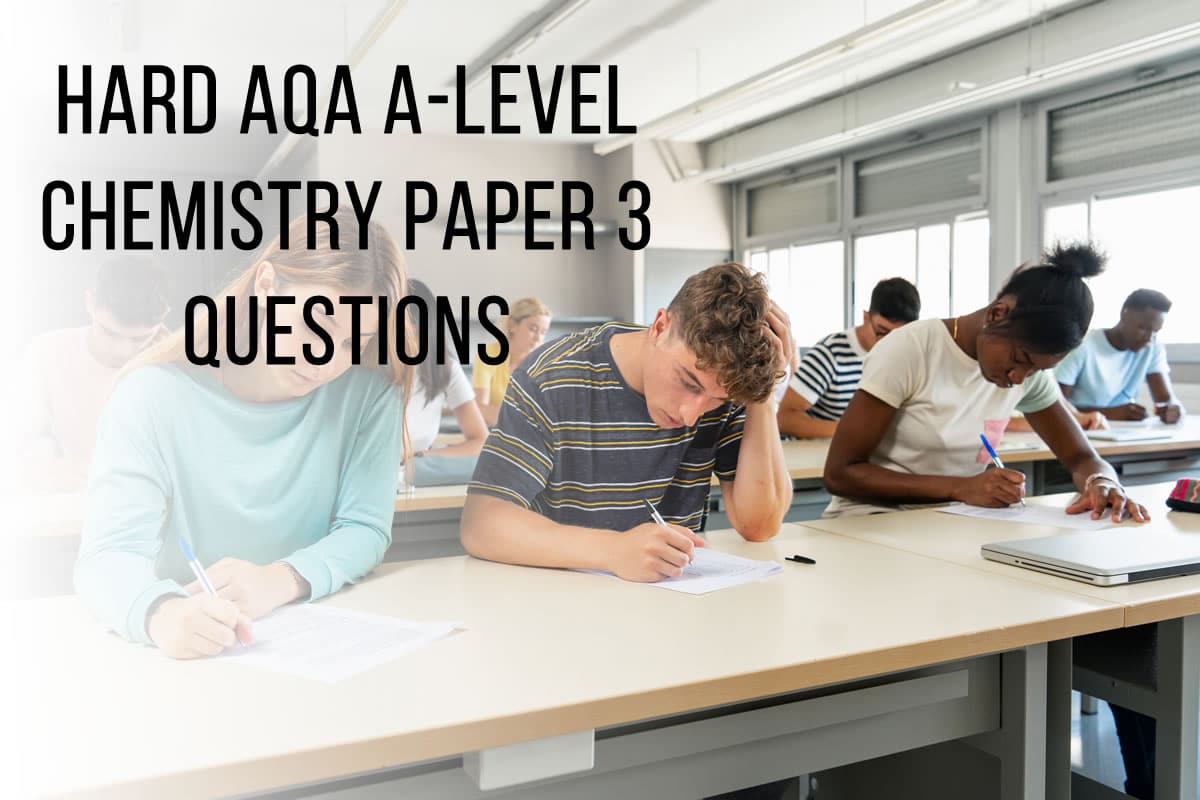
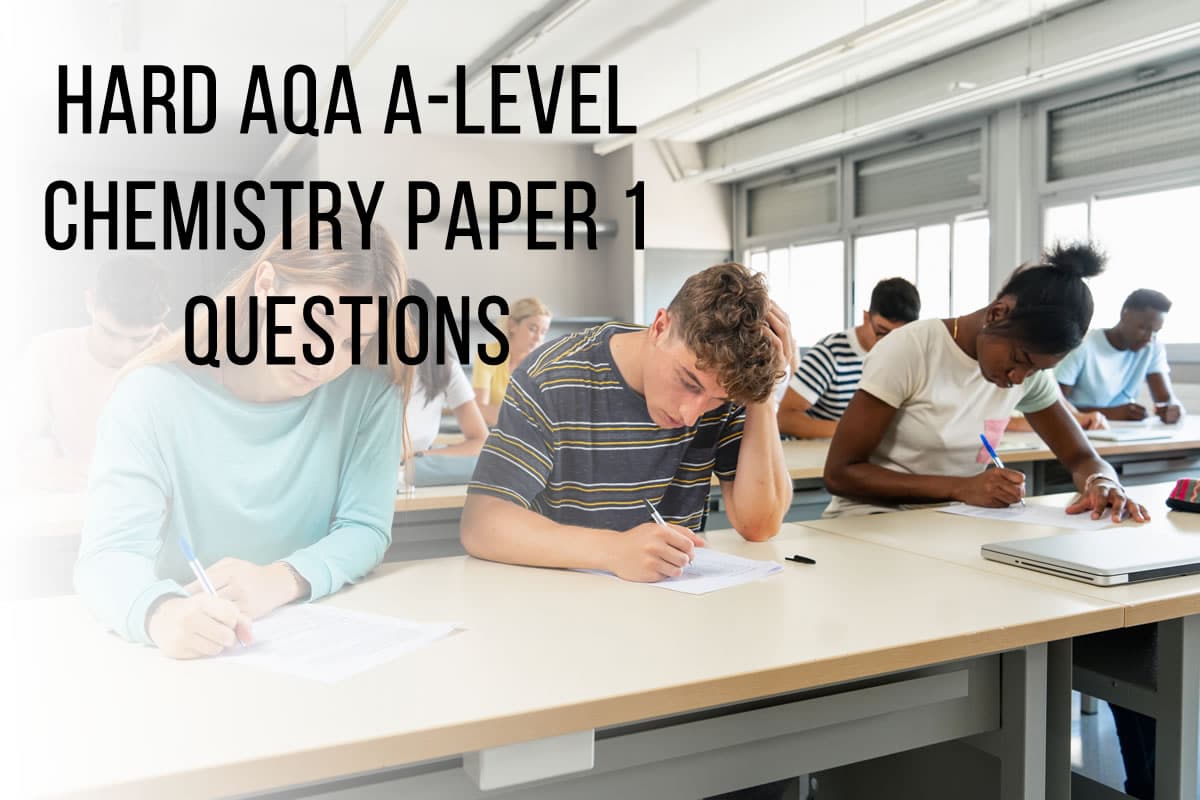
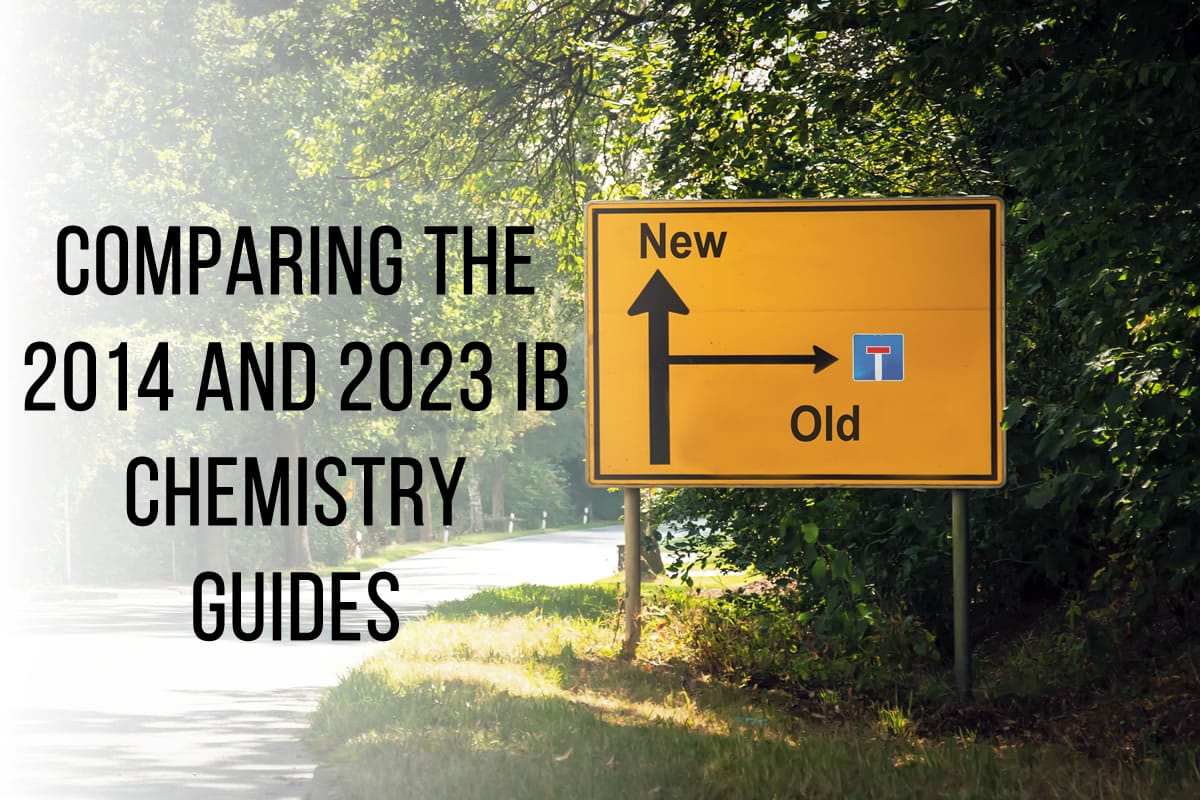
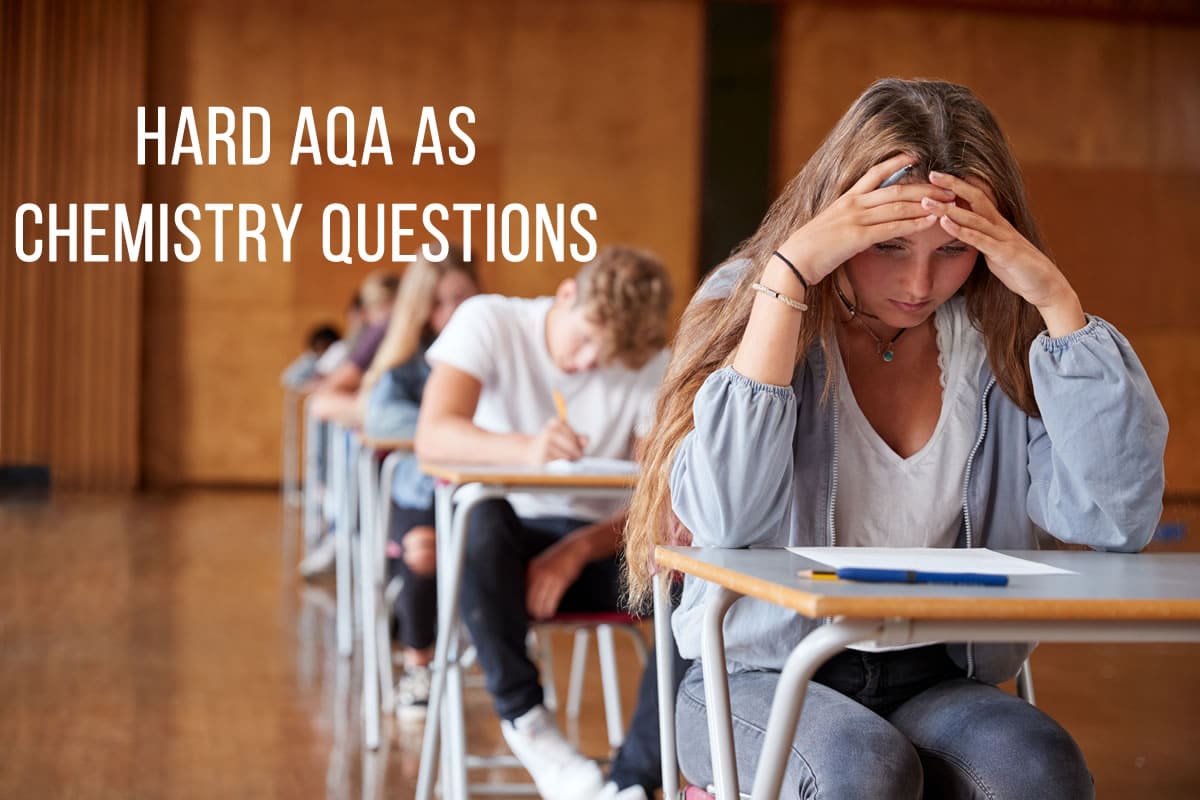
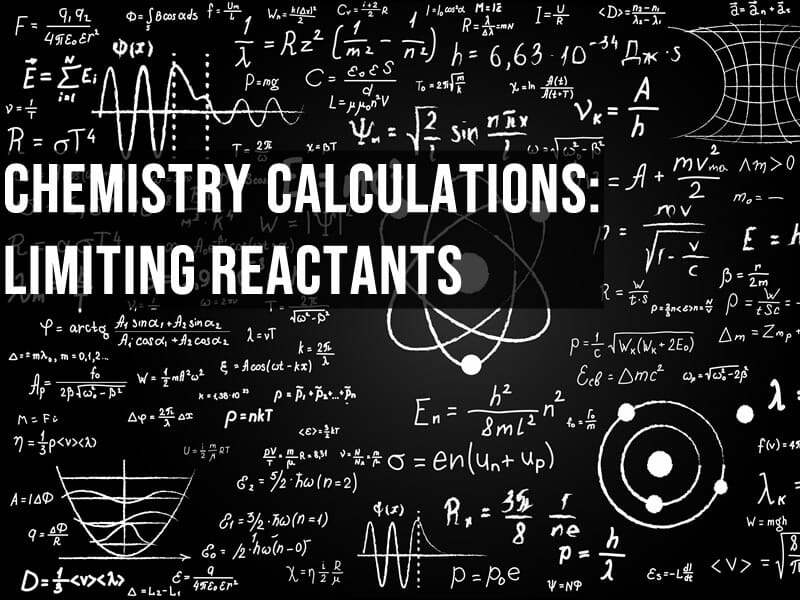
This is comparing A-level Chemistry to IB HL Chemistry, correct?
Yes correct, the complete IB (HL) syllabus.
Hello i am officials from Sun academy.
I read your article of ib chemistry, i want to know should we use ib syllabus for NEET aspirants.
Waiting for response
I’m not completely familiar with the NEET syllabus but I think you’d find there is content missing from the IB syllabus.
Hi!
I’m a little confused at your data processing and analysis section. You seem to imply that only A-Levels cover high-resolution mass spectroscopy and NMR spectroscopy despite both being present in the IB syllabus (and all exams) as well. Perhaps these were added with the reformed 2016 syllabus?
BR,
Emilia
Hi Emilia!
I don’t mean to imply that IB students don’t cover NMR as that would just be plainly incorrect! What I said about NMR was that it “sees A Level students needing to know proton and carbon NMR”, alluding to the fact that A Level students have to know both, whereas IB students only need to know proton NMR. I will emphasise the ‘and’ to make this clearer.
Regarding HRMS, not sure what you mean by “present in the IB syllabus and all exams”. Low-res MS is covered in the current syllabus under topics 11.3, 21.1 and option D, but not high-res?
Thanks editor for comparison, as you said above the in “Chemical bonding and structure” the Ib has deeper understanding for the topics, could you please suggest any books or article if you ride in brief about “Chemical bonding and structure”
Hi Ziyyara,
Are you looking for books covering chemical bonding and structure, or general IB textbooks?
Dr Carl
Yes Sir, Is there any book available online or free content on chemistrytuotor regarding Chemical bonding and structure…